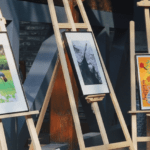Advice from senior leaders of reopened visitor attractions
- In COVID
- Articles
- 5 min read
During our #ReopenRun video series, we visited attractions operating post lockdown and interviewed 10 senior leaders, asking them what advice they would share with their peers internationally.
Despite leading different types of attractions – museums, galleries, zoos, theme parks and more – every leader we interviewed shared advice around five key themes: have your organization’s core purpose drive your reopening strategy, do everything you can to maintain trust with your visitors, be brave and think innovatively, be ‘people first’, and lastly, be kind.
1. Believe in the core purpose of your organization and have it drive your reopening strategy
Victoria Travers, Chief Executive Officer at Stardome Planetarium and Observatory summarizes the importance of reflecting on your organization’s core purpose and mission in reopening, especially when there are so many variables to plan and consider. Always come back to your why:
“Don’t rush into it, start small… I would suggest to take your time, make sure you’re ready when you’re ready to reopen and that you’re confident with it because it’s ultimately your responsibility, you’re the one responsible to your visitors. Think about [reopening] not necessarily as getting visitation back but think of it really around your role as a member and facility of the community, to welcome everyone back in again and provide that comfort and sense of normality again.”
2. Reopening is a great responsibility, and many attractions are a trusted part of their community – do everything you can to maintain trust with your visitors.
Karen Crabb, Chief Executive at Rainbows End theme park, reminds us all of the great responsibility in reopening, “the fact that we can open is great and that’s a huge responsibility we have to make sure we do it well… and to make sure our guests feel safe. Take that responsibility really seriously… we want to make sure we’re doing everything right to make sure we’re moving forwards and not backward.”
One of the biggest ways attractions can do this is investing the time and effort in interpreting government and healthcare guidelines, and communicating these changes clearly for visitors and staff. The biggest impact can be made in training and preparing your team.
“Invest as much time and effort as you can in training, so the reopening process is as smooth as possible… we had only a short time to learn and be trained on,” reflects Philip McGowan, Head of Visitor Experience and Business Performance at Auckland Zoo.
Some visitors may be hesitant in visiting attractions and knowing this, many of the attractions we visited went above and beyond to make sure their visitors felt safe and welcomed the moment they arrived onsite.
The team at SEA LIFE Kelly Tarlton’s wanted to ensure that visitors felt comfortable by making new cleaning and safety procedures visible, placing a poster and hand sanitizer station at their entrance. “It was important to us to not just meet our responsibilities as a business but to go beyond that and provide a level of reassurance to not just our visitors but to our staff as well, that by coming here that their safety is paramount to what we’re doing. We wanted to be quite upfront about the different measures that we’ve got in place so people can feel like they can make an informed choice,” says Dan Henderson, General Manager.
Being amenable to the changing environment and adapting quickly can also build confidence and trust with your visitors. Be receptive to change and ready to make changes to your strategy.
“It is certainly challenge when you have highly interactive spaces… it’s a work in progress and we are constantly adjusting. I think the most important thing is not to set anything in concrete and say ‘this is the way it has to be’ – visitors behave in unexpected ways, so we’ve really impressed upon the team to think carefully about this and really watch what people are doing – you just have to keep adjusting and adapting,” says Sarah Somerville, Public Programmes Manager at the Museum of Transport and Technology (MOTAT).
3. Be brave and think innovatively – now is your chance!
We’ve heard of many stories of how attractions have expedited innovation and changed gears while faced with COVID-19 and we see this trend continuing after reopening. We’ve seen that innovation comes in many forms, from modernizing the visitor experience online and onsite, to thinking more futuristically on the sustainability of operations.
Kirsten Paisley, Director at Auckland Art Gallery talked about the future of blockbuster exhibitions for cultural institutions: “The industry is going to take some time to adjust… the sense across the industry is a really critical way in which we draw audiences to an institution and it will continue to have a lifeblood beyond COVID, but it is making us think differently about courier travel. The throughput of crowded exhibitions – that’s going to look a little bit different, we’re going to need to be much more careful on the timing of visitation, but ultimately that’s going to lead to a much better visitor experience.”
This could mean a shift in international exhibitions that are more moderate in budget requirements. “Does an exhibition need 120 masterpieces, or does it need 40?… How we activate our own collections in the context of others, I think, will become a key focus in the development of international exhibition making.”
Knowing that their in-stadium experience is immersive and unmatched, Eden Park, New Zealand’s national stadium has introduced additional experiences for tourists in addition to their tours, “we knew there was an opportunity to leverage an underutilized asset… so the implementation of greater utilization through our tourism initiatives has seen an influx of tourists adopting stadium glamping or our rooftop tour and zipline,” says Nick Sautner, their Chief Executive Officer.
4. Be people first – enable your team members and consider all aspects of your visitor experience
David Reeves, Director of Collections and Research at Auckland Museum’s top tip is about people. “It’s really important to keep in touch with your staff, understand their anxieties, and talk through some solutions.”
During and after lockdown, the museum implemented a crisis response team made up of senior leaders from across the museum who met every few days. Their role was to respond and plan ahead as government and healthcare guidelines changed. “It’s what got us to today, with everything all in place – the security is in place, cleaning regime, online queueing system and contact tracing – having a tight group of managers, a mixture of senior managers and frontline managers tasked with making things happen. That group changed throughout the lockdown as well, flexing to where the need was and that has been a really successful technique.”
To respond to the crisis, most of your team members may have gone above and beyond, be sure to recognize their work throughout the coming months as your reopening plan is realized in the long term. William Surya, Auckland Sky Tower Manager, cultivates an attitude of gratitude to staff for doing their all to make safety a priority: “I can’t thank enough the team for putting a lot of work into the health and safety and cleaning, as well as to thank our management team for making our safety our number one.”
When thinking about being ‘people first’ in your reopening strategy, don’t forget to make your changes accessible to all. Rhion Munro, Team Leader – Unique Experiences at Auckland City Library talks about the frustration some visitors may feel with more advanced technology solutions being implemented – an example being contact tracing. “Plan for the digital literacy within your community – some people feel very comfortable using things like apps and QR codes to sign in while others just haven’t had that exposure or experience before… really plan for that”.
5. Be kind
Lastly, whether you’re managing staff or communicating to visitors, Philip McGowan from Auckland Zoo has a tip that will resonate with all: “Be kind. Be really generous and hospitable and caring and helpful.”
Watch Dexibit’s #ReopenRun video series, capturing the visitor point at reopened attractions of view plus leadership interviews behind the scenes.
Want to learn more about Dexibit?
Talk to one of our expert team about your vision to discover your data strategy and see Dexibit in action.





